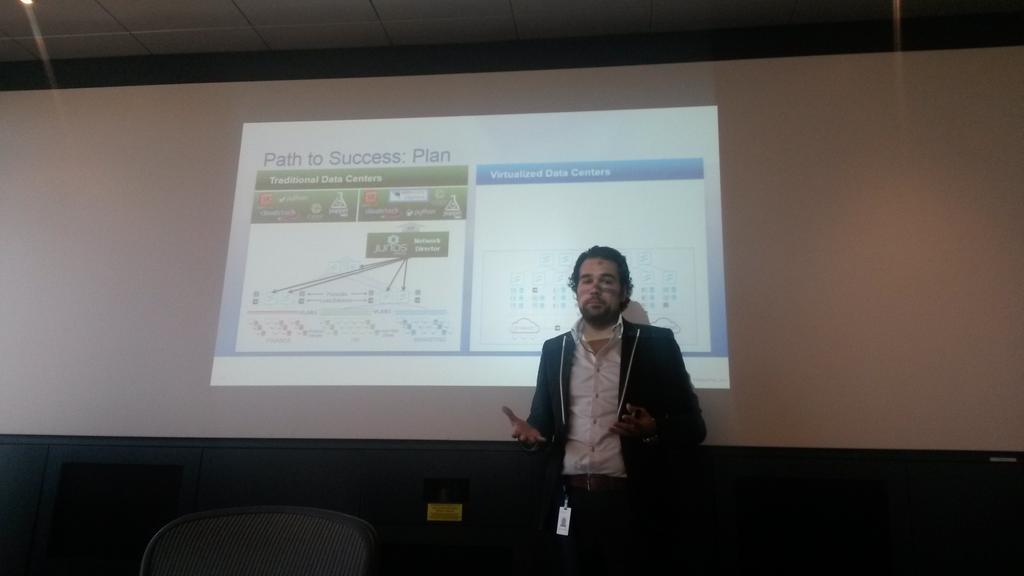
Automation is key in readying businesses for the future modernisation of IT networks, according to Rick Mur, Senior Systems Engineer (SSE) at Juniper Networks.
Talking data centre strategies during a visit to the company’s PoC Lab in Amsterdam, Mur said that the desired outcomes for successful businesses will be leveraged by automation.
The desired outcomes include reducing costs by lowering OpEx, increasing ROI, improving efficiency and rapid deployment of applications.
Mur added that risk reduction is the third desired outcome for businesses, as there is the need to protect digital assets, thwart advanced threats and ensure compliance.
Automation is a topic which always results in questions regarding staff, but Mur was quick to say: "It is not about reducing people, it’s about improving efficiency. We think we can use teams’ skills better."
MetaFabric for businesses
With the promise to improve network agility and reduce OpEx, Juniper has focused on an evolutionary and non-disruptive approach, allied with choice and best breed, without locking-in customers into one solution.
Mur said: "We don’t want to lock our customer into an architecture choice. We want them to be able to innovate, change."
Not being a "fixed architecture", MetaFabric works on the principle of building agility, protecting investment and enabling innovation, according to Mur.
He added: "With Metafabric, we can modernise network topology, centralise orchestration and automation, collect analyst and telemetry data, and virtualise the network."
Mur pointed to three types Metafabric customers; the service providers, like AT&T; the enterprise conglomerate, like Nike; and the global finance firms, such as UBS.
It’s a cloud world
"IT is quickly moving towards cloud. Today we see the biggest chunk of customers using cloud," Mur said, switching the focus to cloud.
Mentioning a Juniper survey, Mur revealed that 57% of customers are using a private cloud to store data, while 60% and 19% use public and hybrid cloud, respectively.
He said: "Cloud is a huge market we see expanding."
There are three different customer deployment types of the technology, according to Murs.
Commercial customers buy off-shelf, value simplicity and have limited customisation; Open Source customers are "frustrated off the shelf buyers", but also hands-on and technical with requirements for customisation; and DevOps customers are "highly skilled, DIY, self-reliant, highly adept and automation is key".
Mur said: "Standardisation is critical here, but creating a new standard takes time. Customers want customisation."
Following on from this, Mur explained the cloud analytics engine and application-centric view of intelligent networks.
He said: "This correlates end-to-end network performance with application requirements and transparency into physical and virtual layers for simpler operations.
"It also improves co-ordination between teams for better application delivery.
Introduction of PRX1000
Mur introduced the latest product release from Juniper Networks. The PTX1000, like the PTX3000 and PTX5000 core routers, leverages Juniper’s ExpressPlus custom silicon for IP/MPLS performance applications.
The 28-nanometer chip can drive 5x100G interfaces and leverages 3D memory architecture, which reduces power consumption and space requirements.
In addition, the PTX1000 features flexible port interface options to maximise investment protection and ensure smooth upgrade cycles.






